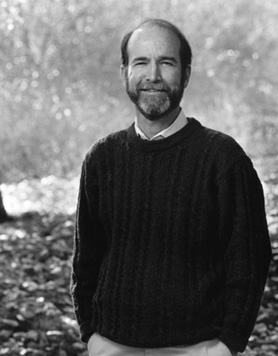
 
Forest Baskett, Venture Partner, New Enterprise Associates
|
|
| Forest Baskett is currently investigating and promoting the
development of new paradigms in computational, storage, networking,
and VLSI methods and structures. He has been involved in computational
science and parallel processing for more than three decades.
"I first became involved in computing and computational science when I was looking for a summer job after my sophomore year at Rice University," says Baskett. "I had decided computers might become important so I found a chemistry professor who was simulating phase changes in the lattice gas on the original Rice computer, the one with tube logic! I had no experience but he, like me, believed that I could learn so he hired me to write and run software to make movies of these phase changes. This was not only my first experience with computers but also my first experience with computer graphics!" Baskett received his B.A. in mathematics from Rice in 1965 and his Ph.D. in computer science from the University of Texas (UT) at Austin in 1970. He was a computer science assistant professor at UT before joining the computer science and electrical engineering faculty at Stanford University in 1971. He was an assistant and then associate professor until 1982 and was a principal scientist at Xerox Palo Alto Research Center from 1980 to 1982. In 1982, he founded the Western Research Laboratory, Digital Equipment Corp., where he served as director until 1986. Baskett joined Silicon Graphics Inc. (SGI) in 1986. He held the positions of vice president and senior vice president of research & development. He was named chief technology officer in 1994, and retired in the summer of 1999. He was elected to the National Academy of Engineering in 1995. "I have been fortunate to be involved in a number of projects that were significant," says Baskett of his long and varied career. "I've had many graduate students who have since done great things. For example, I suggested a project to Stanford graduate student Andy Bechtolsheim and helped provide assistance and funding. The result was the SUN workstation prototype. I sponsored Jim Clark for a position at Stanford and assisted in the funding of his project, the Geometry Engine. I played a role in the development of the original MIPS processor and had significant involvement in the development of commercially viable parallel processors, including SGI's Power Series, Challenge, Power Challenge and Origin product lines." Baskett has been a member of the CRPC External Advisory Committee since 1995. "My interests in parallel processing led naturally to my involvement with the CRPC," he says. "The CRPC has been instrumental in developing computational methods and systems for the parallel processing structures that were invented and have evolved over the last 15 years. The contributions to the understanding of these structures and how or how not to use them have been significant CRPC accomplishments. It's been wonderful to have been associated with these activities." |
|
 Other Issues of
PCR Other Issues of
PCR |  Back to PCR Back to PCR |  CRPC Home Page CRPC Home Page |